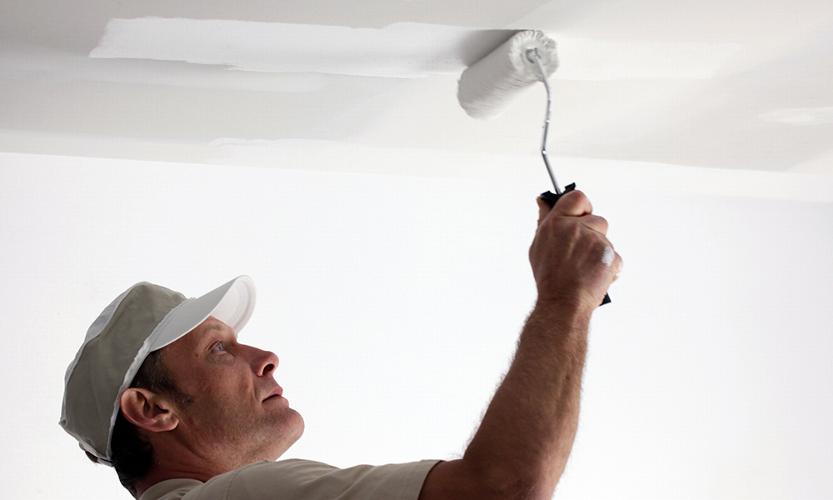How to paint a ceiling
Painting a ceiling can often be a daunting task for many individuals, presenting its own unique set of challenges. However, with the correct approach and adequate preparation, this endeavour can be tackled efficiently and effectively. Proper equipment and thorough preparation are essential prerequisites for any successful painting project.
Preparation for painting
Always make sure there is no danger of paint splashing on carpets or furniture. With ceiling painting more than any other, drips and spray can ruin what appears to be a great painting project without you even realising until after it is completed. Use newspaper to cover any wall surfaces, and use a sheet that you don't need to cover the floor, and any furnishings you do not wish to have paint on.
Getting the surface ready
Preparing the surface for ceilings is usually more straightforward than for walls, where wallpaper, or dreaded woodchip require significant physical effort to remove. However, it is nevertheless important to have a smooth and consistent surface for your ceiling painting. Make sure to fill any holes first, and then use a fine sandpaper to create a smooth surface. Wipe away any dust and clean the ceiling if necessary to remove any dirt or grime. As with virtually any painting and decorating job, 90% of the work is in the preparation.
Making sharp edges every time
For edges I recommend to use tape to create a smooth sharp line. This is applicable to cornices, downlights, and any other trim where you do not wish to spoil the border of paint. Then ‘cut in' with a brush around the edges, where a roller will not reach. You can paint around corners and downlights as needed, and then use the roller in that area to make sure the finish blends, working in small sections so the ‘cut in' areas do not dry before you do this.
Using a roller
A roller will save immense amounts of labour on painting a larger surface. Most decorators recommend a roller around 270mm wide (11 inches). Make sure you have a tray that can accommodate this, and before you start rolling think about where you will place the tray of paint, and how you will move around the area as you paint, for example if you will need ladders or rollers with long handles.
When you start the painting itself, load the roller with paint evenly, and work methodically across the ceiling, working as far as possible into the brushed sections to create the most even and smoothest finish. Always make sure to wash the equipment afterwards, paying particular care to the roller, ensuring not to be too rough with it, as the roller material can become damaged if it is scrubbed too vigorously.
Avoid patches
You can avoid patches by always keeping a ‘wet edge' while you paint. In this way you will not paint over any recently dried paint, and make sure that the finish blends smoothly all the way from one side of the paint job to the other.
Safety first
If you are not confident with heights, or the work feels too dangerous, it is always best to utilise the experience of a professional. Often times a professional decorator can complete the work quickly, to a much higher standard, and it can often be more cost-effective overall, with no outlay on equipment and time investment.
If you are stumped on how to paint a ceiling, give GSI a call on 07384 378989.





